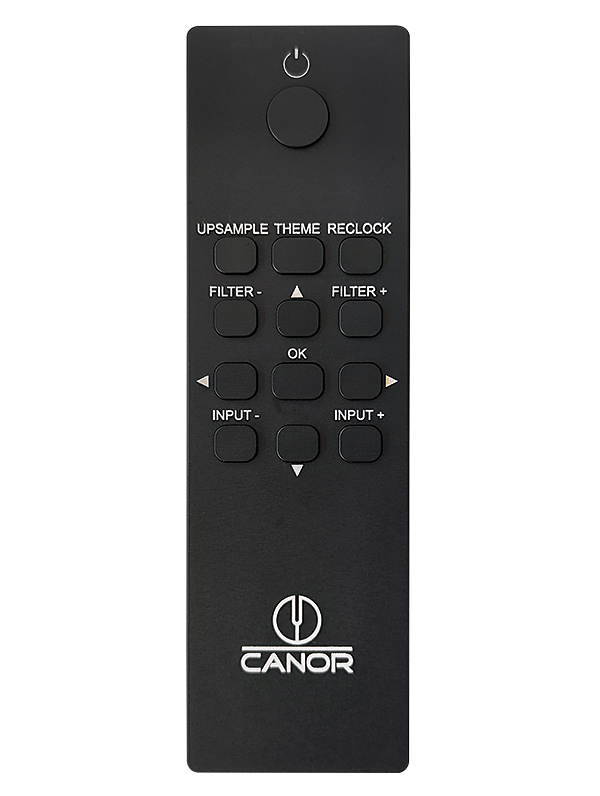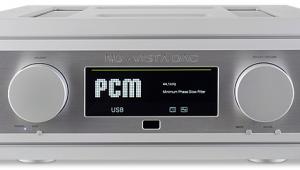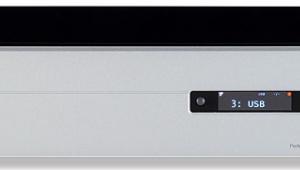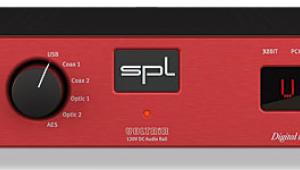Canor Precision Tube DAC 2.10 USB DAC w/Tube Output Page 2
![]() Optimal Experience
Optimal Experience
My previous experiences had indicated that the fine internal digital stage of Hegel's amp could still be bettered by an external DAC, and that was certainly the case here. Canor's Precision Tube DAC 2.10 immediately showed itself as an upgrade, with a greater sense of scale and timing.
The mellifluous voice of Samuel T. Herring was revealed to the world when he guested on DJ Shadow's recent 'Our Pathetic Age' album, a performance which in turn exposed Herring's own Future Islands to a larger audience. And the group's 'As Long As You Are' [4AD 4AD270; 96kHz/24-bit], a slice of relatively simply constructed synthpop, proved a fine choice for analysing the effect of the DAC's filters.
This is music deliberate in its minimalism, with sparse synthesisers and percussion forming the backdrop to Herring's vocal. Playing around while listening, I eventually settled on 'Optimal Transient' – the newly added filter from John Westlake. On the tracks 'Waking' and 'The Painter' in particular, this was an excellent middle-ground choice, delivering rhythmic drive and rich detail. I wouldn't say that using the upsampling/reclocking options with the other filters had a big impact on these pieces, however.

Portraying the full textural wealth of the latest Akademie für Alte Musik Berlin recording was something the Tube DAC 2.10 appeared to managed with ease. I was fascinated by the classical outfit's (second) recording of Bach's Brandenburg Concertos last year, but its Paul Wranitzky: Symphonies set [Deutsche Harmonia Mundi 19658702252; 96kHz/24-bit],
released earlier this year, doesn't disappoint either. The album exudes the grandeur of 18th century symphonic set-pieces, in this case played on era-authentic instruments – that's the Akademie's thing, after all – and I loved how Canor's outboard DAC managed to unearth all the little nuances, even with Wranitzky pieces that start out quietly but build quickly to an attention-grabbing climax.
When the percussion makes its impressive entry in 'III.Allegro of Symphony in C Minor – La Paix' the sense of realism was immense. The sound was so dynamic and natural, with the drum beats resonating through the concert hall, that I nearly jumped out of my seat. Talk about fortissimo!
Can I Give You A Lift?
At the same time, the Tube DAC 2.10 had the insight to give the flutes their own discrete place in the soundstage, not neglecting the subtleties while the timpani player goes for broke. Lifting small details out of the whole without disturbing the overall balance is where this unit really excels, with the added fun of switching from, say, Linear/Minimum Slow to Apodising Fast to add a little bit of sparkle.
A DAC such as this might predominately be used with streaming hardware via USB, considering current listening preferences, but let's not forget there are other worthy digital sources out there. And, with the Tube DAC 2.10 hooked up to a Pro-Ject RS2 T CD transport [HFN Sep '19] via its optical input, some of that 'sound tuning' becomes more enticing. Sure, the various filters didn't make a noticeable difference when streaming hi-res files, but that's less the case with The Colours You See [Naim Records Naimcd365] from the Gauthier Toux Trio. Even discounting the small level difference when going from the non-upsampling 'Optimal Transient' filter, the nimble piano and intricate drum playing were decidedly more precise and natural with upsampling in play on most of the other filters.

Solid Competition
There's a subtle diversity offered by these features, and the overall performance of the Tube DAC 2.10 is exemplary. What surprised me the most during my audition, however, was that I expected the tube output stage to impact playback in another way – imparting a touch of softness and smoothing over edges, perhaps. What I got, on the other hand, was a DAC that came across as wonderfully meticulous and clear, and with a greater sense of detail and balance – and some extra warmth – than I've experienced with most entirely solid-state implementations of this popular ESS chipset.
Hi-Fi News Verdict
Canor's Tube DAC 2.10 is premium as promised, both in terms of fit and finish, and its engaging portrayal of music. The tube output stage is a brilliant addition to proven ESS chips capable of playing nearly all hi-res files, resulting in an accomplished DAC that delights with its precise but resolutely organic sound. The choice of eight filters is a further boon, making this a superb upgrade for restless audiophiles.


















































